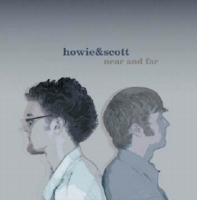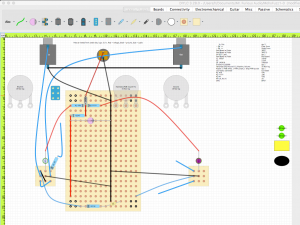Scott recorded a bunch of sax the other weekend; it felt like more sax-per-minute than anything we’ve done previously, so i decided to revisit near and far, comets, signs, and the b-sides to see if that impression was accurate. Here are my notes.
near and far
- Through “Nexus” sax has only appeared twice, I think; “Well” (a long, really good solo after “Cornerstone”) and the pop solo in “Fourbee.” This might have been a function of time; we tracked and mixed in 4 days, with a second round of mixes later, and they weren’t long days
- “The Broken Anger” – I’d forgotten about the vocal processing in the outro. Hearing it makes me feel better about some of the studio production trickery planned for V for Voice, like it’s not a new thing
- At the time we recorded this I definitely thought just playing cool chord progressions (no lead voice) was interesting. I’ve learned to put more sounds over those; the ear needs a hook to guide it along
- I’ve unintentionally re-created some of the tracklisting flow of near and far on V for Voice; a down-the-middle opener, then a strummy follow-up, rocker at #3, experiments in the back half… for V we moved the genre exercise to the b-sides at least
- It would appear from iTunes I haven’t listened to near and far in its entirety since 2010, at least. That’s about halfway between its release and today
- Interesting choice on the final note of “Constellations,” had forgotten that
- The chorus effect on “Staircase” and “Under My Protection” makes interesting bookends to the record. I don’t recall that being intentional
- <Egregious drum jam>
comets
- The intro to “Wait… You’re Where?” marks a huge stylistic shift, bigger than I remembered, especially going straight into it after “Under My Protection.” I wonder if that’s how people heard it at the time
- Much more interesting dynamics and textures here, though the songs still might benefit from some lead lines (“The Bridge” has some and sounds better for them, for example)
- The musical ideas are holding up for me – there’s a palpable jump in excitement and interest from near and far (nothing against it) – and part of me wishes we’d had the time/money/experience/knowledge to execute the technical aspects of these records better and present them in more direct, even light
- Five songs into comets, I think the only sax has been in “Major & Minor.” There’s been lots of cool Scott drumming though
- Listening to all the GK bass on comets, I realize for the first time that V for Voice will be the first time we actually use a real bass guitar
- I’ve probably said it elsewhere but Scott deserves major credit for performing these songs as he learned them. On many tunes, when we’d sit down to start recording, he might have heard a rough idea at practice months earlier, the guitars would have already been recorded to a click, and he hadn’t had much or any time to just practice drums and build his chops. That all adds up to a really tough situation to drum in
- Pretty decent Who’s Next tribute on “What Sounds Are Real?”
- I’m noticing a more marked shift from chord progressions on near & far to riffs on comets than I’d heard before
signs
- Signs and comets are really separate records to me, combined in one package just to get them both out at all. Comets was largely written first and the songs stand alone, where the signs songs share a vibe (and, largely, a key and scale)
- I still would like to re-record some of this heavier, in more of a Kowloon Walled City style, crushing and brutal but with space to breathe, at some point
- The mastering sessions for signs.comets were a Friday/Monday, comets first. Signs sounds better as a result; at Doug’s suggestion I put some body back in the snare and guitars over the weekend in between sessions. Not knowing much about mastering I’d been referencing these mixes to “A Praise Chorus” (insane, in retrospect) and had kept trying to make things brighter and more aggressive to match
- There’s sax on first song, unlike near & far or comets!
- I like and appreciate “Choose To” and its place on the record more and more with time
- The “Easter III” theme riff, while I love it, is a shadow of a weirder, better riff that came to me in a dream that I could never nail down
b.sides
- It’s forever weird to me that “Hymn for our TMD” became a fan fav, but I dig it
- Hey, “Say Something” is super catchy!
- <Is reminded of Bush-era political concerns, when the wars we were against we were at least sure the President would start on purpose and not with a misunderstood tweet>
- Some of this is really open and raw, lyrically
- I’m not sure if the “Snow in the East” vocal is a demo I just decided to keep or what. The outro might indicate that to be the case
- “Was I In Bon Jovi…” from Furious Instance basically counts as a b.side here, being recorded at the same time as the rest of it (and the back half of it is really raw, too, for me at least)




